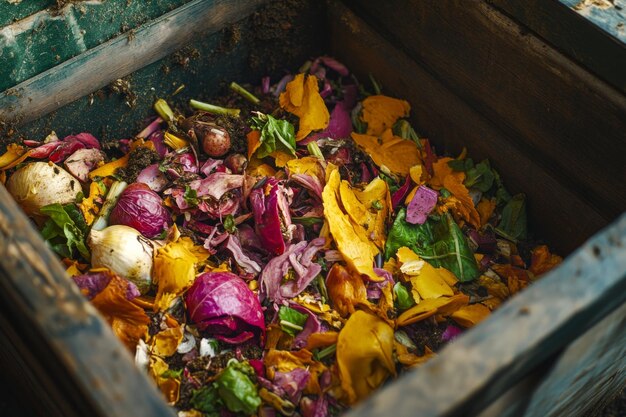Transforming Urban Waste into Treasure: A Comprehensive Guide to City Composting
Cities are often bustling hubs of activity, innovation, and diversity. However, they also generate substantial amounts of waste. In recent years, more urban dwellers are recognizing the value of composting as an effective way to manage this waste. Composting not only reduces the burden on landfills but also transforms trash into nutrient-rich soil — turning waste into "gold" for city gardens and green spaces. If you're curious about how to start composting in the city, this guide will walk you through everything you need to know.
🌱 What is Composting?
Composting is the natural process of recycling organic matter, such as leaves and food scraps, into a valuable fertilizer that can enrich soil and plants. It is a way of mimicking nature's method of biodegradation to produce something beneficial and environmentally friendly.
How Composting Works
Composting involves microorganisms breaking down organic materials into simpler substances. This decomposition process requires specific conditions: moisture, oxygen, carbon, and nitrogen. By balancing these elements, you can facilitate the efficient break down of materials to create a rich, earthy substance known as "compost."
Benefits of Composting in Urban Areas
- Waste Reduction: Reduces household waste significantly.
- Soil Enrichment: Improves soil quality and fertility.
- Climate Impact: Cuts down on greenhouse gas emissions by reducing landfill use.
- Water Management: Helps retain soil moisture, reducing water needs for urban gardens.
🌿 Getting Started: Urban Composting Basics
Starting a composting initiative in a city setting might seem challenging, but it's quite manageable with the right steps.
Choosing a Composting Method
Indoor Composting:
- Bokashi Bins: Use anaerobic fermentation for kitchen waste.
- Vermicomposting: Employs worms to break down food scraps in small, manageable bins.
Outdoor Composting:
- Community Gardens: Collaborate with local gardens to contribute and benefit from community composting efforts.
- Balcony Bins: Small, well-contained bins suitable for limited outdoor space.
Municipal Services:
- Many city governments offer curbside pickup for organic waste or have centralized compost drop-off locations.
What Can You Compost?
Compostable Materials:
- Fruit and vegetable scraps.
- Eggshells.
- Coffee grounds and filters.
- Tea bags.
- Shredded newspaper and cardboard.
- Plant trimmings.
Avoid Composting:
- Meat and fish scraps.
- Dairy products.
- Oils and fats.
- Diseased plant material.
- Pet waste.
🌟 Tips for Successful Urban Composting
Monitor Moisture Levels: Ensure that your compost pile has just enough moisture — it should feel like a damp sponge.
Air Circulation: Turn the compost pile regularly in outdoor setups to maintain oxygen flow. For indoor bins, provide small air holes.
Layering: Alternate between layers of "greens" (nitrogen-rich materials) and "browns" (carbon-rich materials) to speed up decomposition.
Temperature Control: Keep your composting area at optimal temperatures, avoiding extreme cold or heat which can inhibit the activity of microorganisms.
Handy Tools for Composting
- Compost Thermometer: To check and maintain ideal temperatures.
- Aerating Tool: Helps to turn and mix the compost pile easily.
- Compostable Bags: For waste collection in small apartments.
🚀 Overcoming Challenges
City composting isn't without its challenges, but solutions are often straightforward.
Limited Space
- Use Vertical Solutions: Consider stackable bins or wall-mounted systems to maximize limited space.
Managing Odors
- Proper Layering: Correct balance of greens and browns reduces odor.
- Activated Charcoal: Place near indoor bins to absorb unpleasant smells.
Pest Prevention
- Secure Lids: Ensures pests like rodents cannot access the compost.
- Avoid Attractants: Keep meat and dairy out of the compost.
🌻 Beyond Home: Community Engagement
Composting doesn't have to be a solo endeavor. Engaging with a community can amplify efforts and create a more significant environmental impact.
Start a Composting Group
- Host Workshops: Educate neighbors about composting benefits and techniques.
- Community Compost Bins: Set up shared bins in local parks or community gardens.
🌍 Environmental Impact and Future Trends
The future of urban composting is promising, driven by growing environmental awareness and technological advancements.
Innovations in Urban Composting
- Smart Composting Bins: Equipped with sensors to manage and optimize the composting process.
- Municipal Involvement: Expanding city programs for organic waste collection and processing.
The Role of Policy
- Incentives: Some cities offer tax breaks or subsidies for residents who compost at home.
- Legislation: Growing focus on composting initiatives as part of sustainability and waste reduction plans.
🎯 Key Takeaways for Urban Composting 🌟
Here's a concise summary of urban composting tips and insights:
- Choose the Right Method: Indoor or outdoor; consider your space and convenience.
- Balance Materials: Ensure proper ratios of greens to browns for optimal decomposition.
- Stay Consistent: Regular maintenance and monitoring for effective results.
- Community Collaboration: Engage with local groups to expand efforts.
- Stay Informed: Keep up with new technologies and city ordinances to enhance your composting practices.
As cities turn towards more sustainable living practices, composting stands out as a simple yet impactful method to reduce waste and enhance urban environmental quality. By incorporating these practices into daily life, city dwellers can contribute significantly to a greener future, proving that even in a concrete jungle, we can turn waste into treasure.

Related Topics
- A Comprehensive Guide To Community Cooperative Childcare: A Grassroots Solution
- A Guide To Online Second-Hand Shopping: Platforms, Tips, And Tricks
- Affordable After-School Programs And Clubs: A Complete Guide
- Affordable Group Therapy: Benefits And How To Find
- Affordable Natural Therapies For Mental Well-being
- Avoiding Financial Scams And Pitfalls: A Comprehensive Guide
- Backpacking On a Budget: A Guide For The Minimalist Traveler
- Beginners Guide To Thrifting: Stretching Your Dollar Further
- Beyond Clothing: Thrifty Finds For Home And Kitchen
- Budget-friendly Garden Start-ups: From Seeds To Harvest